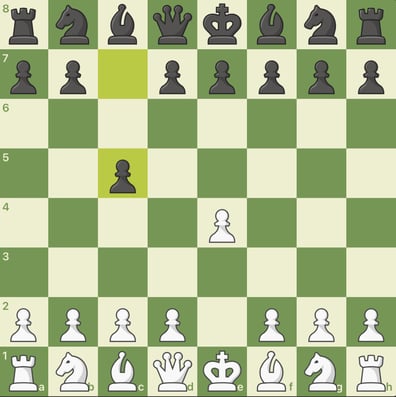Mastering the Sicilian Defence
A Beginner's Guide to One of Chess' Most Powerful Openings - Sicilian Defence


Mastering the Sicilian Defence: A Beginner's Guide to One of Chess' Most Powerful Openings
Chess players know that openings can set the tone for an entire game, and one of the most popular and formidable responses to 1.e4 is the Sicilian Defense. The Sicilian is an aggressive opening that helps Black seize control and set up a solid counterattack. This opening has been used by countless grandmasters and is essential for players who want a dynamic, unbalanced game that often leads to sharp tactical play.
What is the Sicilian Defense?
The Sicilian Defense begins with the moves:
e4 c5
When White pushes the pawn to e4, controlling the center of the board, Black responds by advancing the c-pawn to c5. This move immediately challenges White’s central control and sets the stage for counterplay.
Why Play the Sicilian Defense?
Active Counterattack: Unlike passive openings that aim for a more balanced position, the Sicilian allows Black to counter White’s 1.e4 directly.
Unbalanced Positions: By playing c5, Black creates an asymmetric pawn structure. This often leads to unbalanced positions, which means that both sides have unique advantages and disadvantages. For ambitious players, this imbalance offers great potential for winning chances.
Favored by Champions: Legends like Bobby Fischer, Garry Kasparov, and Magnus Carlsen have often relied on the Sicilian Defense in their games. Studying this opening means learning from some of the greatest minds in chess.
Key Variations of the Sicilian Defense
The Sicilian Defense has several popular variations, each with unique strategies and typical middlegame plans. Here are a few key variations:
Open Sicilian (2. Nf3 followed by d4): White develops the knight, preparing to strike with d4, exchanging center pawns. This leads to dynamic, open positions that are rich with tactical and strategic possibilities.
Closed Sicilian (2. Nc3): White avoids d4, instead developing the knight to c3 and focusing on a slower, king-side buildup. This variation tends to lead to quieter, more positional play, with Black often aiming for a kingside pawn storm.
Dragon Variation (2. Nf3 d6 3. d4 cxd4 4. Nxd4 Nf6 5. Nc3 g6): Named for its “dragon-shaped” pawn structure, the Dragon is one of the most aggressive forms of the Sicilian. Black fianchettos the bishop on g7, setting up a powerful diagonal attack. The Dragon is ideal for players who enjoy sharp, tactical play.
Najdorf Variation (2. Nf3 d6 3. d4 cxd4 4. Nxd4 Nf6 5. Nc3 a6): The Najdorf is probably the most famous and heavily studied line of the Sicilian. The move a6 prepares a queenside expansion and flexible development. This variation offers a lot of strategic depth and is known for leading to rich, complex middlegame positions.
Basic Ideas and Strategies in the Sicilian Defense
Control of the d4 Square: Many lines in the Sicilian revolve around controlling and attacking the d4 square. Black often lets White play d4 but uses this opportunity to exchange pawns and create active piece play.
King Safety: Since the Sicilian is a double-edged opening, king safety is crucial. In many lines, Black will delay castling or look to castle kingside while preparing a counterattack on the queenside.
Queenside Counterattack: In several variations, Black aims to expand on the queenside, especially if White initiates a kingside attack. Moves like …b5 and …a6 are common in these lines to create counterplay on the queenside.
Piece Activity: In the Sicilian Defense, Black generally wants to avoid passive play. Every piece should aim to be active, looking for tactical chances to pressure White.
How to Study the Sicilian Defense
To play the Sicilian well, it helps to study specific variations and understand the typical strategies for each. Here are some ways to deepen your knowledge of this powerful defense:
Analyze Master Games: Look at games by grandmasters who specialize in the Sicilian. Notice their opening moves, middlegame strategies, and endgame transitions.
Learn Key Tactical Patterns: The Sicilian is rich in tactical opportunities. Practice common motifs, such as sacrifices on e6 or f5, that frequently occur in the opening.
Practice with a Coach or Computer: Playing practice games against a computer or a coach can help you understand the typical positions in the Sicilian Defense and recognize where to focus your counterattacks.
Conclusion
The Sicilian Defense is an excellent opening for players looking to play aggressively as Black and to counter White's 1.e4. Whether you enjoy tactical fireworks or deep, positional play, the Sicilian has variations to match every style. As you study the opening, focus on understanding the core strategies, analyzing grandmaster games, and practicing common tactics to make the Sicilian a strong weapon in your repertoire. Happy playing, and may your counterattacks in the Sicilian lead to victory!
